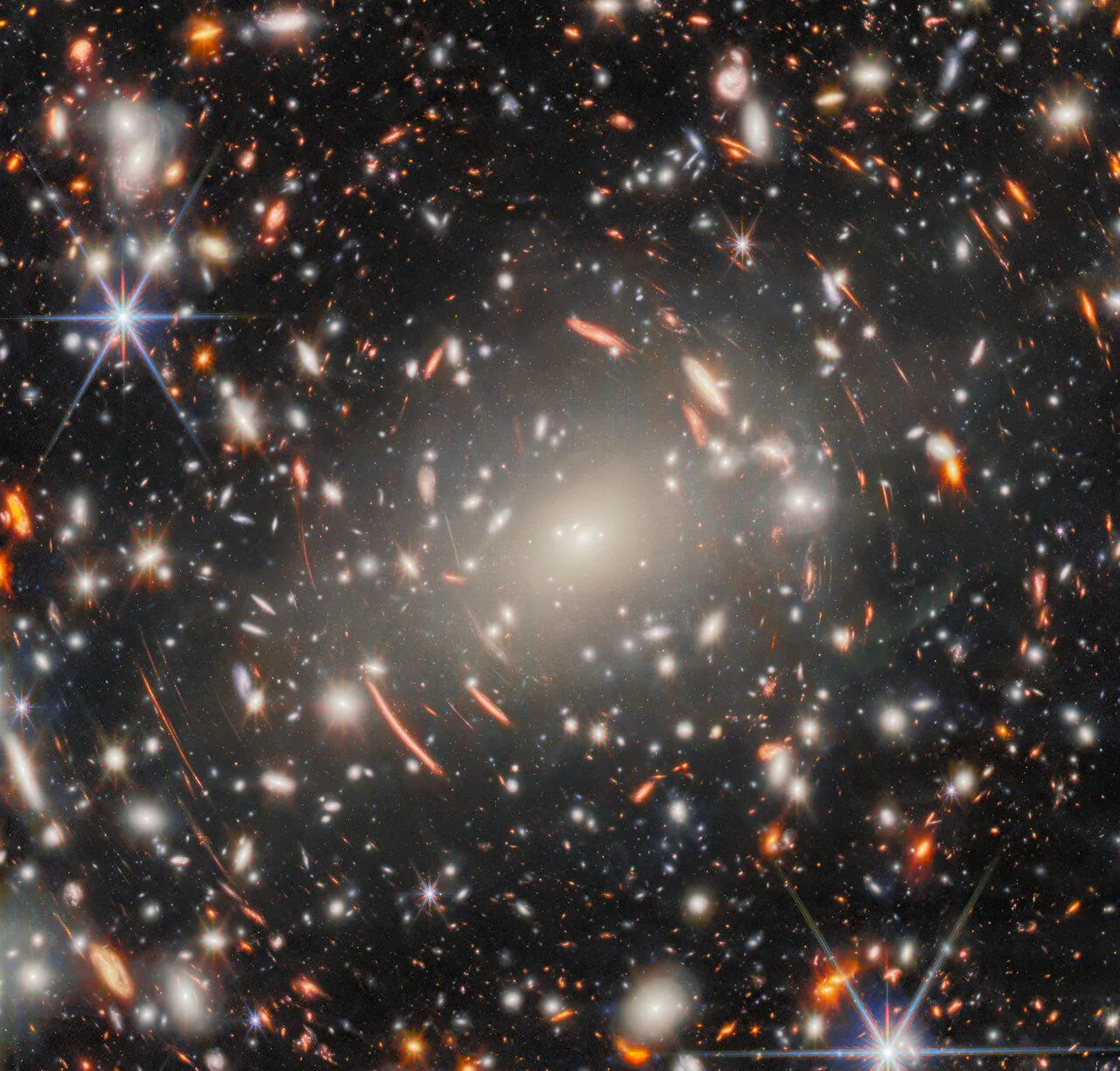Unveiling the Cosmic Tapestry: JWST's Glimpse 4.5 Billion Years into the Past
The James Webb Space Telescope (JWST) continues to redefine our understanding of the universe, offering unparalleled views into cosmic history. Its latest breathtaking image is no exception, providing a remarkable glimpse of a galaxy cluster that acts as a natural magnifying glass, allowing us to peer back an astonishing 4.5 billion years into the universe's distant past.
Abell S1063: A Window to the Early Universe
At the heart of this stunning new observation lies Abell S1063, a colossal galaxy cluster previously studied by the NASA/ESA Hubble Space Telescope’s Frontier Fields programme. However, JWST's advanced capabilities, particularly its Near-Infrared Camera (NIRCam), have pushed the boundaries even further. The new imagery from Webb’s NIRCam takes this quest even further back in time. The image showcases an incredible "forest of lensing arcs" around Abell S1063, revealing a multitude of faint galaxies and previously unseen features.
The Magic of Gravitational Lensing
What makes this image so extraordinary is the powerful phenomenon of gravitational lensing. Abell S1063 is so incredibly massive that its immense gravitational pull warps the very fabric of spacetime around it. As light from much more distant galaxies passes through this distorted space, it gets bent and magnified, much like a cosmic lens.
These "warped arcs" are not optical illusions; they are the stretched and magnified images of galaxies located billions of light-years behind the cluster. By studying these distorted background galaxies, astronomers can explore objects that would otherwise be too faint or too far away to observe, effectively looking back in time to an earlier epoch of the universe. JWST's NIRCam excels at capturing this infrared light, allowing us to see these incredibly distant, red-shifted galaxies.
Peering into a Younger Cosmos
The sheer age and distance represented in this image provoke profound questions about the universe's evolution. While the light we see from the galaxy cluster itself has traveled for 4.5 billion years, some of the lensed galaxies originate from even earlier times, revealing a range of cosmic distances. This image offers tantalizing clues about a younger cosmos, a time when galaxies were physically closer to each other before the universe's accelerated expansion stretched them apart.
It's a humbling thought to consider a time when galactic neighbors might have been relatively closer. This observation reinforces the concept of an expanding universe, where cosmic distances were indeed smaller in its infancy. It highlights why galaxies look closer together in images from the early universe – a combination of their actual proximity then and the visual effect of extremely high optical zoom on distant objects.
A Universe Full of Wonders
The JWST continues to unlock secrets of the cosmos, from the formation of the first stars and galaxies to the intricate dynamics of galactic clusters. Images like this of Abell S1063 are more than just pretty pictures; they are invaluable data points that help us reconstruct the universe's grand narrative. They remind us of the vastness, beauty, and incredible complexity of our universe, where every faint red dot could be an entire galaxy, billions of light-years away, waiting to be explored.

Credit: ESA/Webb, NASA & CSA, H. Atek, M. Zamani (ESA/Webb)




